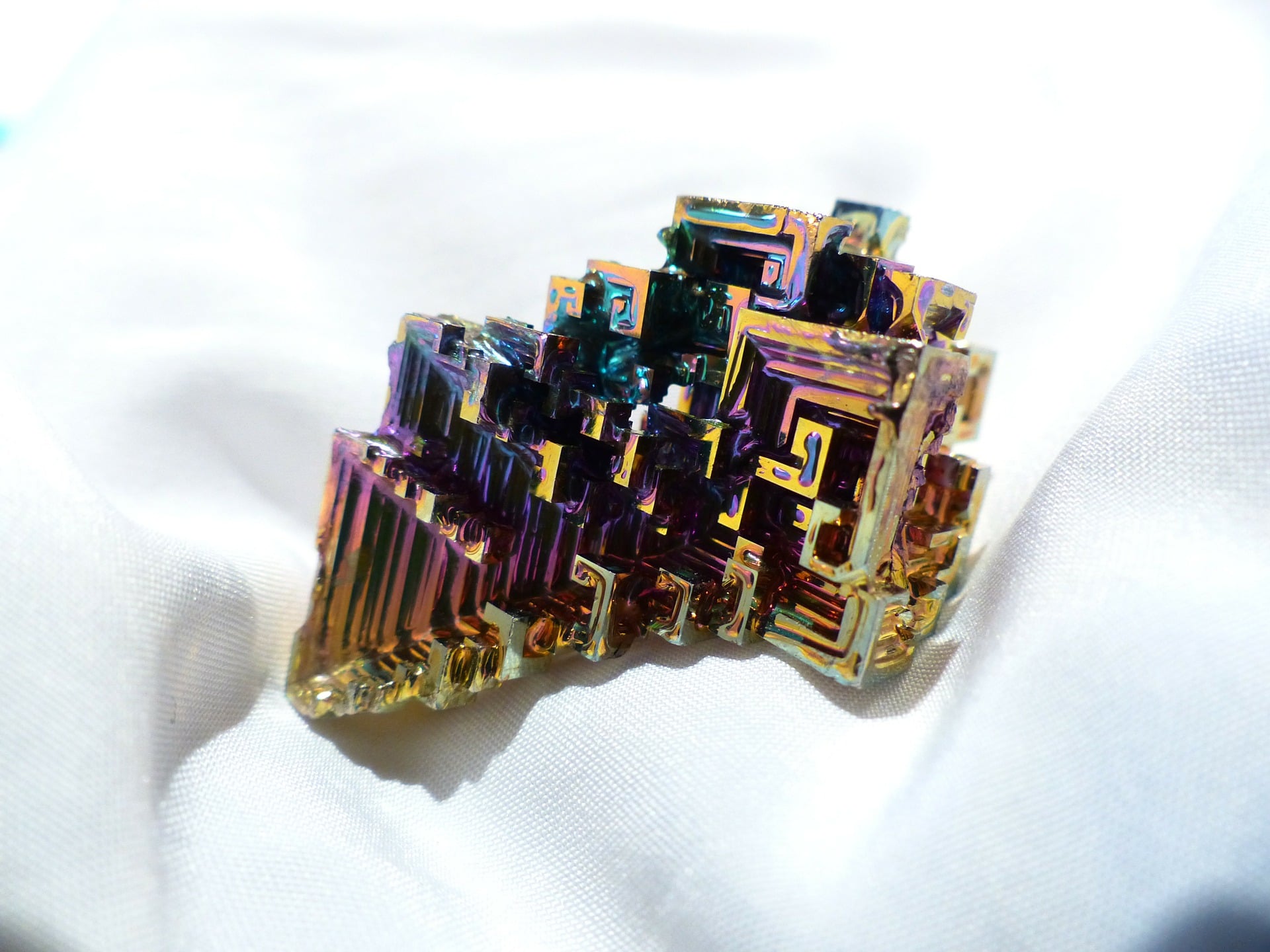In this guide on how to invest in gold, I’ll explain and review 7 different ways of investing in gold.
Some gold investment methods are more cost-effective than others, while some provide superior security.
As you move through this guide, I will highlight the pros and cons of each method to help you understand the strengths and weaknesses of different gold investment options available and what you could invest in.
Investing in commodities such as gold carries a high degree of risk due to the volatility of the market price. Perform detailed research and understand your risk tolerance before you make any investments.
Investing in gold using different asset classes
Commodities are usually treated as a single asset class. But I can show you how you to use 4 different asset classes to gain exposure to the gold price:
- Direct ownership of gold
- Indirect exposure via gold mining equities (stocks and shares)
- Collective investment schemes (funds)
- Gold derivatives
Each asset class brings advantages and disadvantages. Even within each asset class, different methods are available with different risks and rewards. This brings us to 7 different investment options.
This guide will group investment opportunities by asset class to help you compare and contrast similar gold investment techniques.
When looking at different investment strategies, I will rate them on the following factors:
The Rating System Explained
1
Private Holdings of Gold Bullion
Building a personal collection of gold bullion

Personal ownership offers maximum control and gold you can touch. However, its high costs make it inappropriate for short term investment.
Ideal for: Retirees with a long time horizon.
Not ideal for: Speculators with a modest sum to invest.
Privately holding gold bullion bars and coins

Effectiveness
Efficiency
Security
Practicality
Liquidity
Overall
Is buying gold bullion bars and coins a good way to invest in gold?
Effectiveness: Gold bullion investors enjoy a direct relationship between the value of their assets and the gold price. Therefore this is one of the simplest and most effective ways to profit from a rise in the gold price.
Efficiency: Transaction costs are relatively steep, which makes buying gold expensive as a short term investment. Gold dealers will sell to you at a mark-up above the gold spot price.
Plus, you’ll need to pay for postage, a secure safe, extra home insurance just to take ownership of your gold. You’ll also need to pay selling fees when chose to sell your holding.
Security: Gold is impossible to trace and value dense. Therefore it is highly vulnerable to theft, although this risk can be mitigated through insurance and security precautions. One of the best forms of protection against theft is to keep knowledge of your gold stash secret.
Practicality: Selling physical gold is more difficult than buying.
You will need to bring your gold to a commercial buyer before you can receive a confirmed quote. This can make it time-consuming to ‘shop around’ for the best price available.
Private buyers are unable to verify the authenticity of gold, which can invite uncompetitive offers below its true market value.
Liquidity: Gold bullion has an active and reliable market. Gold is always in demand and many commercial gold buyers will pay cash on the spot.
You may also be interested in: A guide to investing in gold bullion coins
2
Third Party Gold Bullion Storage
Leave security to the professionals

Third party gold bullion storage retains the effectiveness of direct ownership, and outsources the complexities of gold security to a dedicated service provider. Third party storage is efficient but it demands a high level of trust.
Featured provider: Bullion By Post
Introductory 'refer a friend' offer: New customers referred through this referral link will receive a free 1 oz Silver Britannia coin if they place an order over £250
(See full T&Cs for this promotion, Financial Expert will also receive a gift, terms may change.)
Ideal for: Time-poor investors looking to maximise their return.
Not ideal for: Investors who need access to their gold in a doomsday scenario.
Third party gold bullion storage

Effectiveness
Efficiency
Security
Practicality
Liquidity
Overall
Is using third-party storage for gold bars and coins a good way to invest in gold?
Effectiveness: Gold bullion investors enjoy a direct relationship between the value of their assets and the gold price. Therefore this is one of the simplest and most effective ways to profit from a rise in the gold price.
Efficiency: With integrated gold broker and storage solutions, your gold doesn’t even leave the secure facility. Neither during purchase or sale.
Because the gold bullion is held on a large scale, you can benefit from low storage costs. These will be much cheaper than taking the proper precautions in your own home. Suppliers often allow you to sell your gold back to them at a reasonable margin below the gold spot price.
Security: Gold bullion is stored in secure facilities. I have deducted a point because providers don’t often allow you to visit the site and inspect your gold investment.
This creates room for doubt and uncertainty over whether the gold actually exists. This underpins the importance of good governance and regulation of the companies activities. However, gold custodians can furnish the latest certificate from an external audit of their gold stocks. This should provide a level of reassurance.
Practicality: You can buy coins and bars from online gold dealers with a few clicks.
Liquidity: Gold dealers usually offer a simple buy-back scheme which guarantees you a swift sale without a haggle.
This is great for liquidity, but I’ve still deducted a point. The guarantee is actually dependent on the solvency of the vendor. Unlike a normal marketplace, you’ll need to get hold of your gold before you can sell on the open market.
You may also be interested in: Our view: is gold overvalued?
3
24 Carat Gold Jewellery
Attractive now, attractive later?

Investing in gold jewellery offers a thrilling yet compromised investing experience.
Ideal for: Novice investors looking for a bit of fun with the added bonus of portfolio diversification.
Not ideal for: Serious investors seeking a large scale gold investment opportunity.
Gold jewellery for investment and personal use

Effectiveness
Efficiency
Security
Practicality
Liquidity
Overall
Is buying gold jewellery an effective way to invest in gold?
Effectiveness: Gold jewellery retails at a higher price than the spot price of gold. By how much will depend on whether the design is desirable, and whether it includes any precious stones.
An item of jewellery will hold its underlying gold value, but the value of good design and ‘newness’ will fall. This increases the prospect of an early loss in value.
However, this might be acceptable in exchange for the joy of wearing a beautiful jewellery piece.
Efficiency: The high retailer mark-up on jewellery makes this the most costly way to acquire gold by weight. An item purchased ‘brand new’ will almost certainly lose value when it is sold as ‘used’ piece.
Security: When carried on the person, jewellery is exposed to a higher risk of theft. At home, jewellery is not typically stored as securely as gold bullion coins and bars. These tend to be bought in larger quantities and afforded greater protection.
Practicality: Buyers are presented with an endless choice of different gold jewellery options. Each ring or bracelet will have a different level of appeal as an investment and personal possession. This makes deciding on a purchase quite a lengthy process. Furthermore, sentimentality may also be a barrier to eventually parting with the item!
Liquidity: Jewellery can be sold locally to jewellers, gold dealers and pawnbrokers. It can even be sent by post to national ‘cash for gold‘ dealers. Therefore the only restriction is the working hours of these businesses.
4
Investing in gold through equities
A familiar investment, with looser returns

Investing in gold mining shares exposes you to company-specific risks, in addition to price changes linked to the gold price. Reducing company risks requires a good deal of diversification - a gold mining fund could be a simple way to achieve this.
Ideal for: Equity investors looking for a more exotic portfolio.
Not ideal for: Anyone looking to accurately replicate changes in the gold spot price.
Investing in gold through equities (stocks and shares)

Effectiveness
Efficiency
Security
Practicality
Liquidity
Overall
What is an indirect investment in gold?
Investing in gold through equities means buying stocks to gain some indirect exposure to the gold price.
The principle at work is that the fortunes of gold miners are tied to the gold price.
When the gold price is high, miners will achieve great profits from their operations. Therefore we would expect that their share price will also surge alongside the gold spot price.
If the gold price were to fall; mines may be forced shut. It could cost more for them to extract gold than what they could hope to recoup from its sale.
In such a way, a gold equity investment can behave a bit like an investment in gold bullion itself.
As you will read below, however, this indirect relationship reduces the effectiveness of equities as a replacement for gold.
Is investing in mining stocks an effective way to invest in gold?
Effectiveness: The price movement of gold mining stocks will not follow a 1:1 relationship with the gold spot price. In other words, if the gold price jumps by 30%, gold stocks may overshoot or underperform in comparison.
Efficiency: The process of buying stocks is very efficient in isolation. Investing costs for online stock purchases has never been lower.
But the buy and sell price of stocks will not accurately reflect the movement in the gold price itself. If a miner suffers bad news, such as their mining license being revoked, you may suffer a loss. This would have no connection with the gold price itself.
Security: If you execute your trades through a UK stockbroker, your holdings will be held in trust under a tight regulatory regime.
However, the underlying security of the gold mining companies themselves is less secure.
Countries rich in natural resources can have a weak rule of law. At the same time, gold mines are very attractive assets to unscrupulous characters.
This leaves mines vulnerable to confiscation, take-over or attack by friendly and unfriendly political forces. The company stock price and therefore, your investment, will be exposed to this underlying political risk.
Practicality: It’s easy to use your existing stockbroker to buy mining stocks just like buying shares in any other company.
Liquidity: Publicly traded shares are extremely liquid, particularly for smaller investment sizes.
Shares can be traded during the stock exchange opening hours, and cash settlement is usually in 3 days or less.
You may also be interested in: How commodities perform in a recession
5
Collective schemes: Physical ETFs
Leverage the benefits of economies of scale

By pooling your resources with many other investors, ETFs can offer a very low cost way to invest in physical gold.
Ideal for: Cost-conscious investors who want to track the gold spot price accurately, whilst maintaining liquidity.
Not ideal for: Gold trinket collectors.
Investing in gold with physical Exchange Traded Funds (ETFs)

Effectiveness
Efficiency
Security
Practicality
Liquidity
Overall
An introduction to collective investment schemes:
Rather than buying and holding a specific quantity of gold, you can invest in collective investment schemes. These funds pool money from other investors to take a large investment position.
Investment strategies can vary from fund to fund. Therefore always check the prospectus to understand how the fund invests.
The most common form of fund used to invest in gold is an exchange traded fund.
An exchange traded fund or ETF is a fund which is listed on the stock exchange. Retail investors make an investment by purchasing shares in the ETF just like any other public company.
ETFs therefore offer the diversification of a fund, plus the liquidity of a publicly traded stock.
Gold ETFs come in two main forms:
- Physical gold ETFs
- Synthetic gold ETFs
Let’s look at the physical gold ETF first:
Is a physical gold ETF the best way to invest in gold?
A physical gold ETF will, as the name suggests, directly invest in gold bars. This typically takes the form of 1kg gold bullion bars. These are stored in some of the world’s most secure facilities in Switzerland, New York and London.
Physical ETFs are some of the golds largest private owners of gold bullion. The sheer size of funds keeps their security costs low as a fraction of assets under management.
Unfortunately, ordinary investors cannot visit the investment manager and ask to see the gold holding. However, large investors and institutions with a large enough stake are allowed to request delivery of the quantity of gold equivalent to their shareholding.
This right to swap shares for the underlying assets is one of the driving forces which ensures that the share price closely tracks its underlying gold value.
Effectiveness: Because your holding of ETF shares represents a fraction of a real gold bullion holding, the price of an ETF will follow the value of the gold spot price closely.
Due to market forces, an ETF fund won’t match the gold spot price exactly but it should be within a reasonable distance. This gap is known as the ‘tracking error’ of the fund, and it is usually quoted in the fund’s literature.
Efficiency: Thanks to their scale, physical ETFs are perhaps the most efficient investment vehicles available. Their billion dollar balance sheets can easily absorb the administrative overhead, security and insurance costs. For example, the US-listed SPDR Gold Shares fund carries an annual expense charge of just 0.4%, which rivals many cheap equity index funds.
Security: Large and reputable physical gold ETFs name major global financial institutions as the custodians of their assets, which are stored in secure vaults. It is difficult to conceive of a higher level of security available to private investors. However, a 5/5 score doesn’t mean infallibility. Custodians can lose assets or even worse; they could go out of business. No private company can ever give an absolute guarantee that your gold will be safe in every scenario.
Practicality: ETF shares can be traded via an online stockbroker or share dealing service for the usual charge for domestic or international share trades.
Liquidity: Just like gold mining equities, I score ETFs a 4 for liquidity, on the basis that shares can usually be converted into cash within 3 days of placing a trade.
You may also be interested in: What is an Exchange Traded Fund?
6
Collective schemes: Synthetic ETFs
Lean on trust to take a risky shortcut

Synthetic ETFs avoid the need to pay for expensive security, by doing away with the need to hold gold at all. But a trade-off appears in the form of counter party risk.
Ideal for: Few individuals. Physical ETFs are superior to synthetic ETFs in most respects, and have dominated the gold ETF landscape as a result.
Not ideal for: Anyone who worries about a repeat of the 2008 financial crisis.
Taking a gold position through synthetic ETFs

Effectiveness
Efficiency
Security
Practicality
Liquidity
Overall
What is a synthetic gold ETF?
Synthetic ETFs will enter into contracts with investment banks. These contracts involve the parties agreeing to exchange money each day to represent the rise or fall in the gold price.
If the price of gold rises, the bank will pay the ETF. If the price falls, the ETF will pay the bank.
This arrangement, although contrived, allows a synthetic gold ETF to produce a return close to the real movement in the gold spot price, without needing to hold any gold at all.
This practise has two primary shortcomings:
- The first is that the bank will incorporate a profit margin into the pricing of the contract. It needs to give itself a house edge in the deal, to give it an incentive to enter into the deal in the first place.
- Secondly, the ETF is dependent upon the solvency of the investment bank. If the bank cannot afford to make good on its promise to pay, the value of the fund would directly suffer. All a synthetic ETF holds is an ‘IOU’ from the counterparty bank, therefore the financial strength of the fund depends exclusively on the strength of counterparty, and the assets it pledges at collateral under the terms of the contract.
Are synthetic gold ETFs an effective way of investing in gold?
Effectiveness: The fees and financing costs rolling into the pricing of the headline gold contract could lead to a synthetic ETF still lagging behind the gold spot price. Like with physical ETFs, you can measure this tracking error yourself by comparing the performance of the fund against its benchmark over a historic period.
Leveraged versions of gold ETFs, which claim to provide double or triple of the daily return of the gold spot price, have produced very poor returns over the long run. This is because the contracts entered into by these ETFs are refreshed on a daily basis at different prices, causing an accumulation of losses to build up when held over a long term. These are not designed to replicate the holding of gold bullion for several years.
Efficiency: Synthetic gold ETFs may appear to have a lower annual management charge than their physical counterparts, however, the real proof is in the pudding of investment returns.
Some synthetic ETFs may deduct slightly less fees from the fund each year to cover costs (one of the benefits of not needing to look after $ millions in gold), but their ultimate return is dependent upon the strength of their counterparty making good on the contract.
Security: When times are good, and the counterparty bank remains strong, returns are assured. However, if the counterparty were to fail, and the value of collateral were to fall, the ETF investors would be left out of pocket.
In 2008, Lehman Brothers entered bankruptcy as one of the greatest casualties of the financial crisis. Lehman was the counterparty bank for several investment products, which resulted in millions of dollars of losses for investors as a result. Therefore, I want to make clear that this risk isn’t just a theoretical point for completeness. Counterparties can and have failed to make good on their commitments in the recent past.
Practicality: Like their physical ETF cousins, synthetic ETF shares can be traded via an online stockbroker or share dealing service for the usual charge for domestic or international share trades.
Liquidity: I score ETFs a 4 for liquidity, on the basis that shares can usually be converted into cash within 3 days of placing a trade.
7
Gold CFDs and Spread Betting
Fast paced gold trading with maximum adrenaline

Spread betting offers a high-stakes method of generating magnified returns from short term movements in the gold spot price.
Ideal for: Short term speculators with a high risk tolerance.
Not ideal for: Anyone who isn’t fully prepared to lose their capital.
Using CFDs and spread bets to trade in gold

Effectiveness
Efficiency
Security
Practicality
Liquidity
Overall
How to invest in gold using derivatives
Derivatives are financial instruments (contracts) whose value is linked to another financial asset. A derivative will typically consist of two parties agreeing to make a payment to one another at a future date, based upon the value of an asset or index at that point in time.
The contract described above between a synthetic ETF and a counterparty bank is an example of a derivative.
It’s possible for sophisticated investors with high risk tolerance, to enter into derivative contracts in their own right.
The most common types are:
- Gold options
- Contracts for Difference (CFDs) and Spread Betting.
Both types of contact are high risk, and could lead to a loss which exceeds your full investment. That’s right, it is entirely possible to lose more money than you even invested.
This is due to the principle of leverage, which is inherent in the design of both options and spread betting. The contracts only require investors to stake a small % of their total exposure.
This means that you are ultimately able to take a much larger position in gold than if you were buying bullion with cash. A deposit requirement of 5% would translate to a 20x magnified stake, were you to still invest your full sum. For example, by staking £5k you could take a position equivalent to owning £100k of gold.
I will only focus on spread betting and CFDs in this article, as options are complex and are only accessible through specialist platforms.
I’ll use the terms CFD and spread betting interchangeably as these products are very similar.
Is spread betting and CFDs a good way to invest in gold?
In spread betting, you can place a bet with a provider about the movement of the gold spot price. You choose the size of the gain or loss you wish to receive per $0.1 increase or decrease in the price, and this will impact the size of your cash stake required.

Effectiveness: Over a trading day, the outcome of a CFD or spread bet is tightly linked to the performance of the gold benchmark chosen. This makes it a very effective way to speculate on short term price movements.
However, over the longer term, the costs of leverage accrue in the form of financing charges. Any open bets held overnight will incur this charge as they are rolled forward into the next day.
Efficiency: A CFD or spread betting provider makes a profit by raising the bar at which point you will make a profit. In other words, if you are betting on the price of gold rising, and the price is currently $870.1, then the provider may offer you a bet where you will profit only after it rises past $870.4. This inefficiency is known as the ‘spread’.
This might seem subtle, but the odds of a short term movement is essentially a balanced coin flip. By subtly increasing the difficulty of the bet, the provider gives itself a profitable house edge.
Security: I’ll quote a high profile CFD provider in the UK: “78% of retail investor accounts lose money”. This is the health warning which all spread betting and CFD providers are required by law to display to potential customers.
Because a CFD is an agreement with the provider, investors are exposed to counterparty risk of that provider becoming insolvent. But it’s the leverage which keeps client losses consistently high. Due to the size of the underlying investments, CFD traders have very sensitive positions which are capable of being wiped out by relatively small market movements. This is known as Gambler’s ruin, which I explain further in my full guide to spread betting and CFDs.
Practicality: Trading CFDs and spread betting is done through user-friendly web browser interfaces and apps, which are designed to look like cutting edge trading platforms. Bets are quick and easy to place and liquidate at the tap of a button.
Liquidity: Bets can be closed and converted into cash within minutes, making this a highly liquid form of investment.
I hope you’ve enjoyed this guide on how to invest in gold, and that I’ve helped you generate several investing strategies of interest for you to research further. If you’re interested in learning more about how to invest in gold, please search the blog for our gold content.
Comments 2
I think you advice is very good, I feel sure we are about to have a stock market crash or readjustment.
We have COVID-19, Low Inflation, Global Warming and a change in government.
Good articles for beginners.